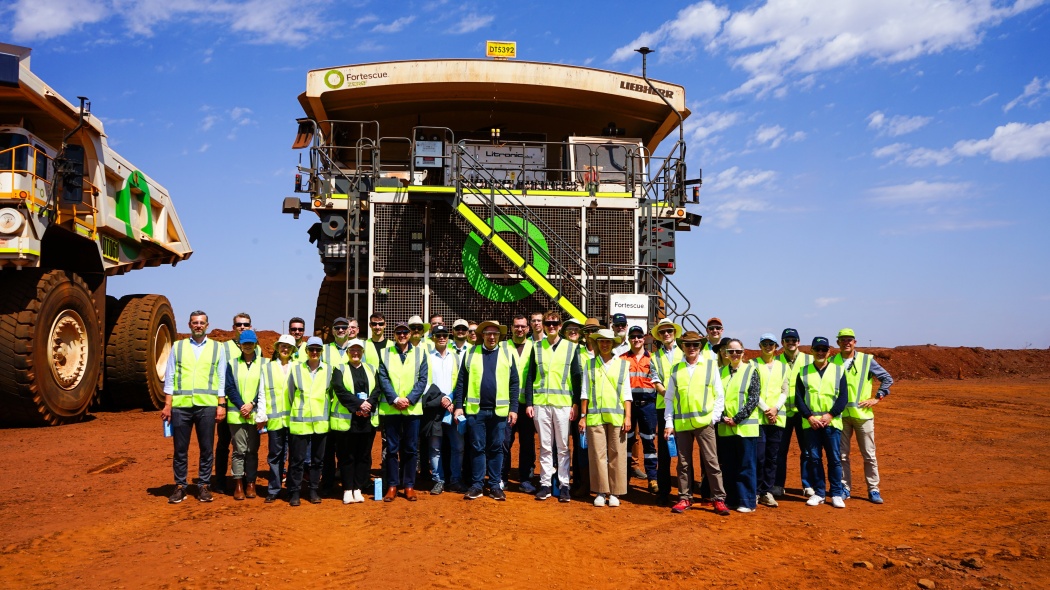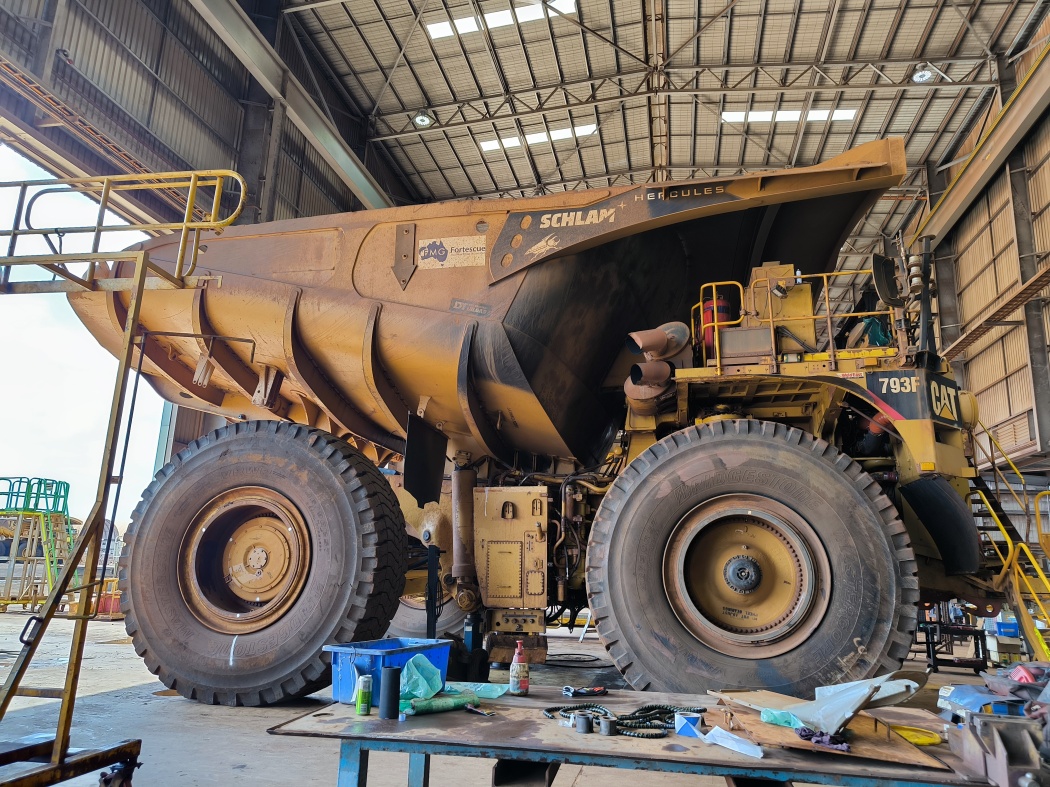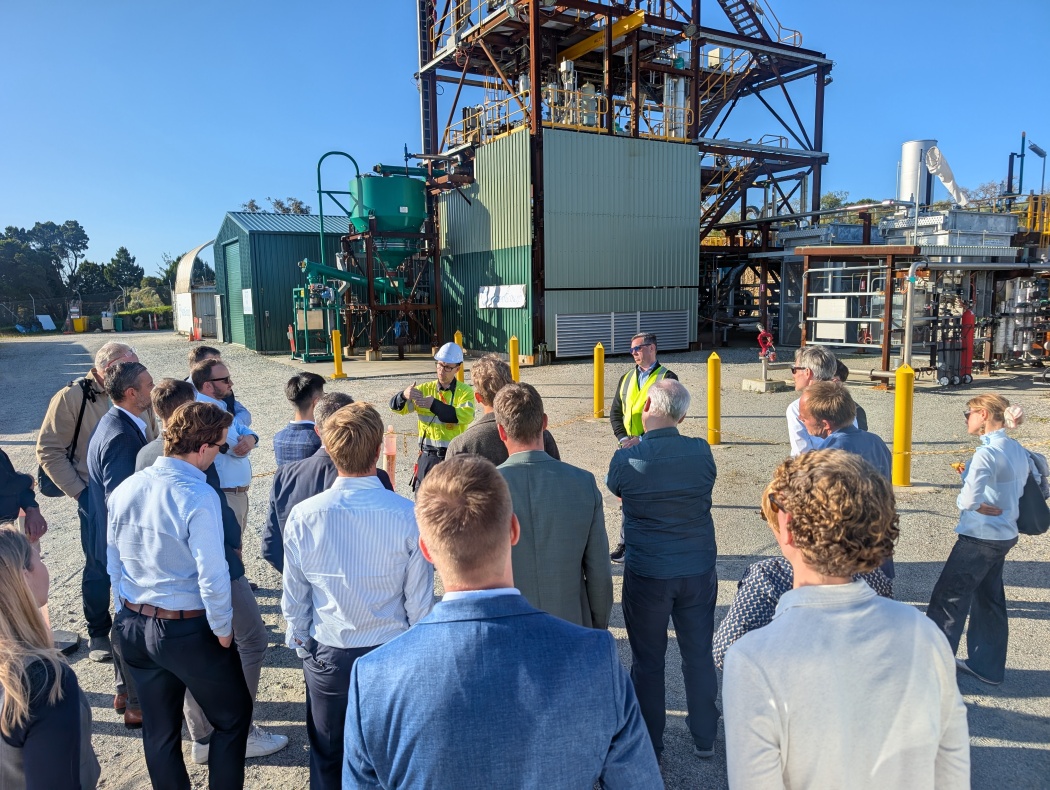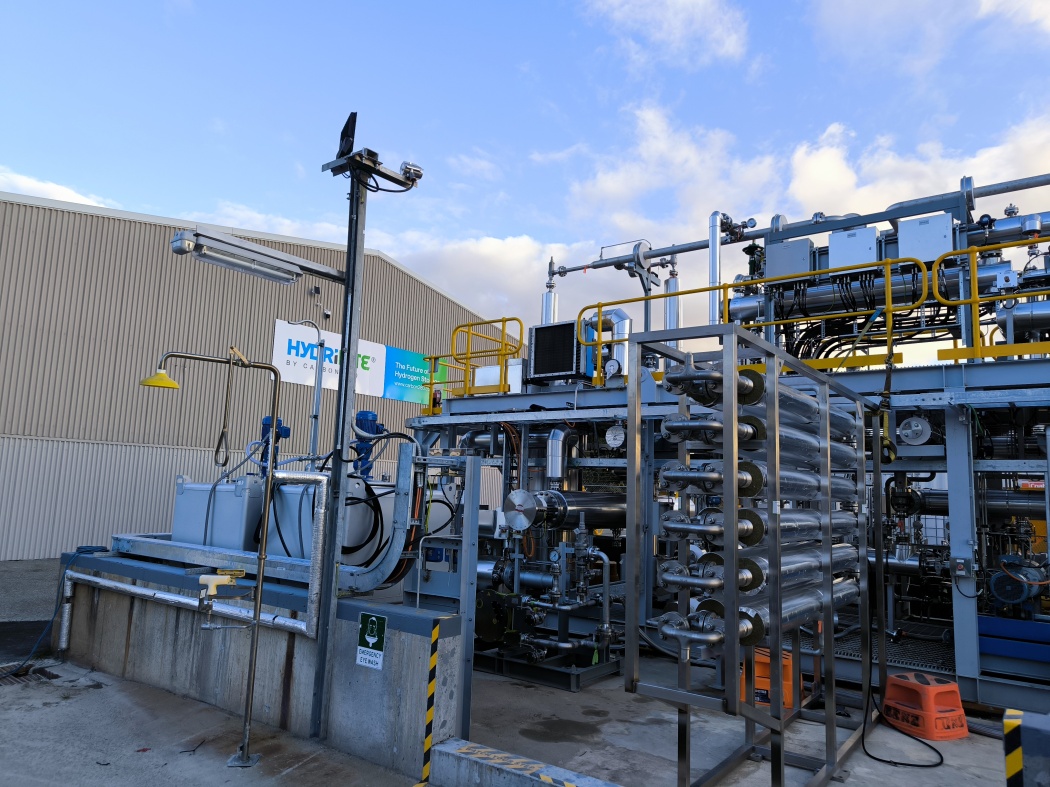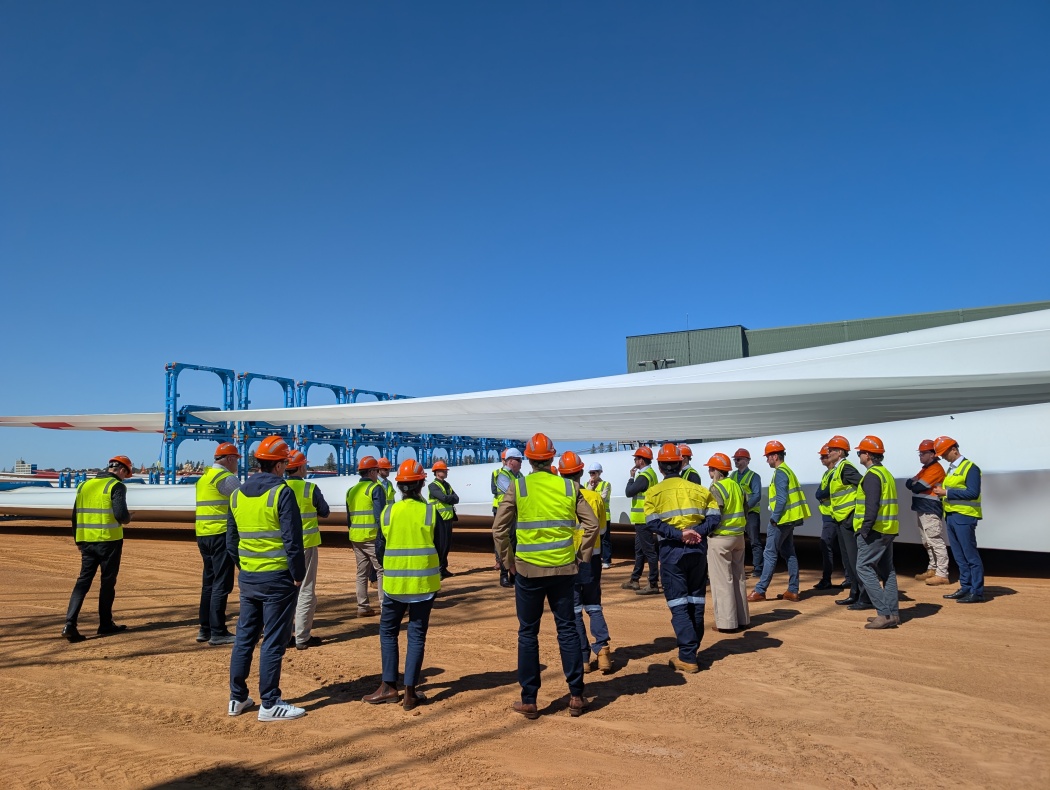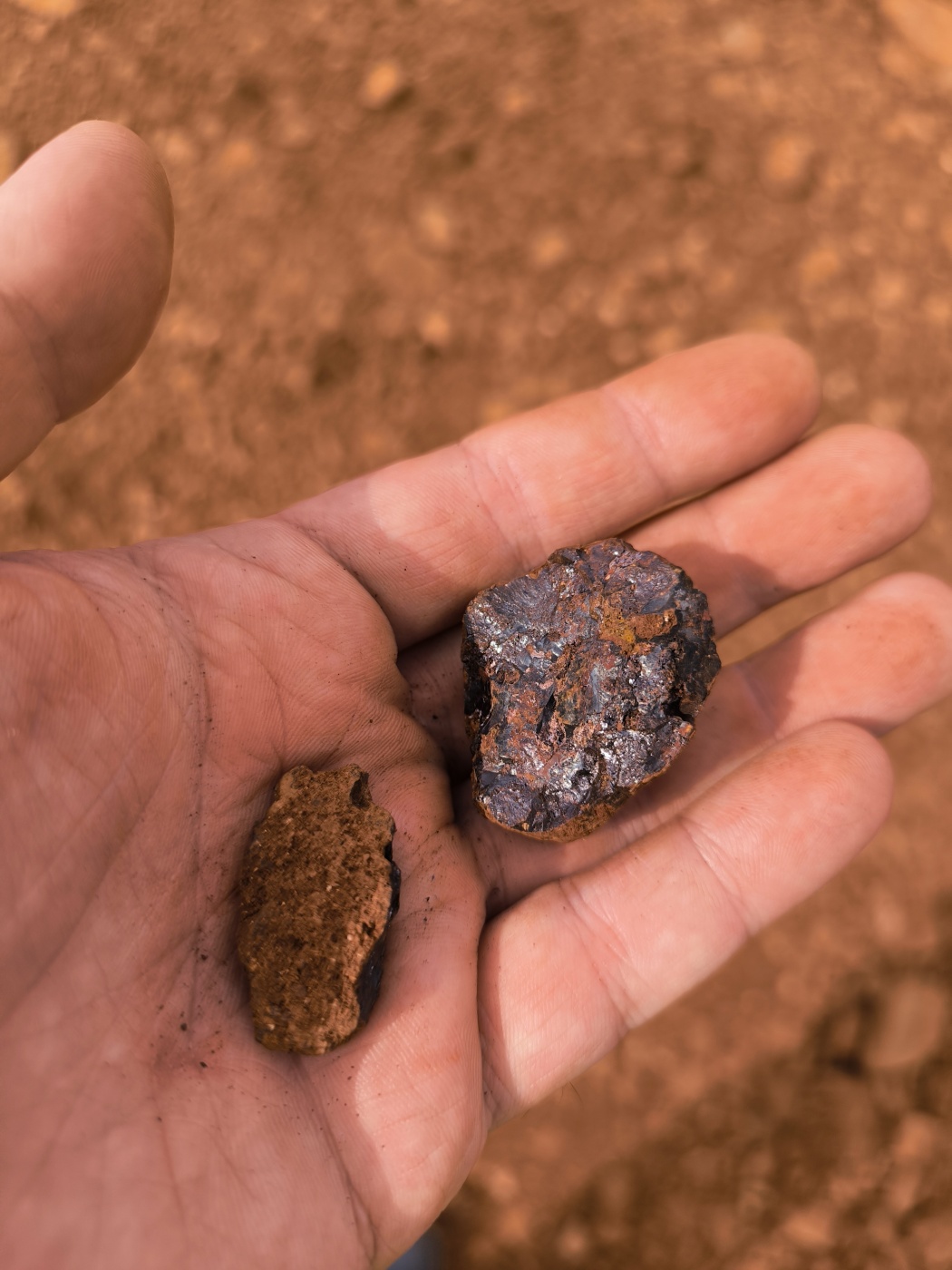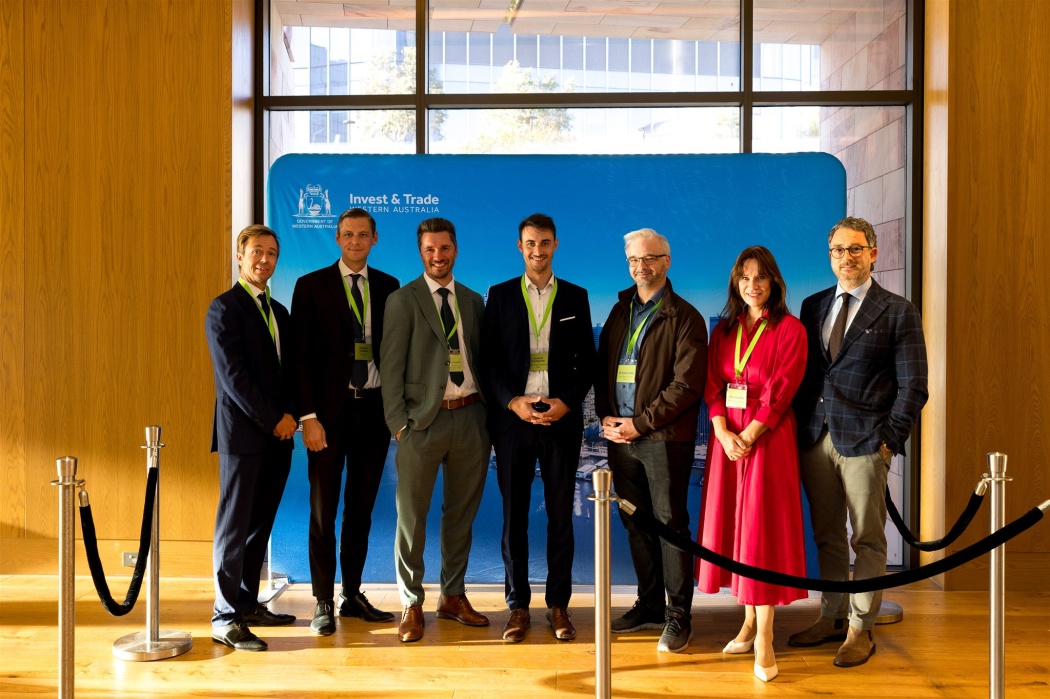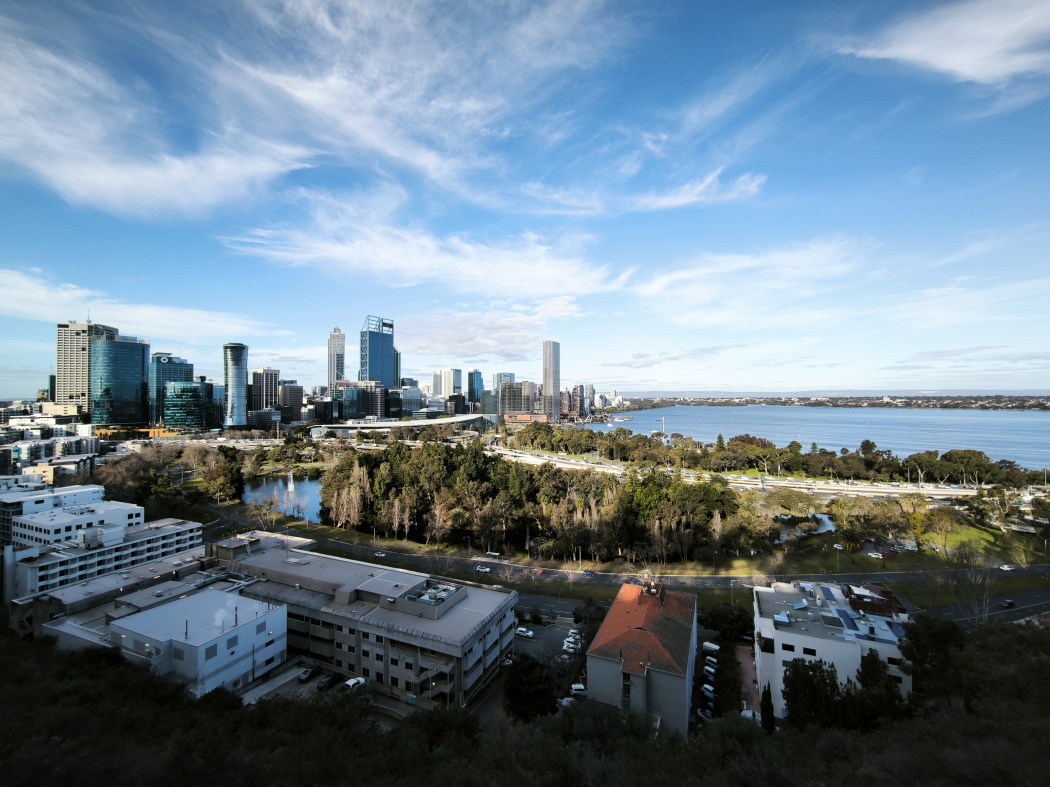“Metal hydrides have many advantages, even for the outback”
Dr Paul Jerabek researches metal hydrides for hydrogen storage at the Helmholtz -Zentrum Hereon. As part of a European delegation, he presented these technologies to partners from politics, business and industry in Australia. The trip was supported by the Federal Ministry for Economic Affairs and Energy (BMWE) and organised by the European think tank Adelphi. The delegation included BMWE Parliamentary State Secretary Stefan Rouenhoff, Stahl-Holding-Saar, the Hamburg Port Authority (HPA), H2Global and Thyssenkrupp Nucera Australia, as well as RWTH Aachen University, Fraunhofer ISE and BTU Cottbus-Senftenberg. Paul Jerabek explains the opportunities the trip brings for hydrogen research at Hereon.
Which destinations did you visit on your trip through Western Australia?
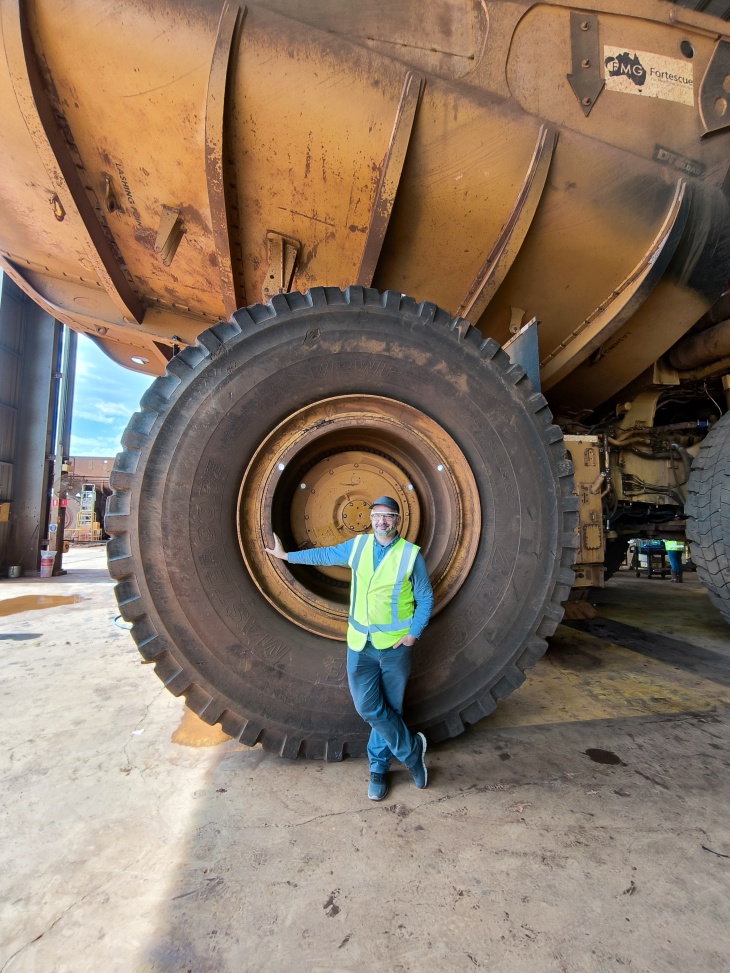
Dr Paul Jerabek on the delegation trip in front of a dump truck. Copyright: Paul Jerabek
We visited the University of Western Australia and looked at hydrogen production and storage projects in Perth. We also visited an iron ore mine in the Pilbara region and the port city of Geraldton, where a project to produce green iron is currently being planned. Finally, we took part in the Australia-EU Hydrogen Supply Chain Forum in Perth. This is a conference on the development of a green hydrogen economy, which brought together over 200 representatives from government, industry and science from Europe and Australia. The aim of our delegation trip was to exchange expertise on climate-neutral iron production and innovative hydrogen technologies, which we are also researching at Hereon. Australia has great potential to generate and use renewable energies, including in the form of green hydrogen, thanks to its outstanding wind and solar resources.
What did you learn on the journey?
As a materials researcher, it was very educational for me to see the issues that industry partners and politicians have to deal with in order to implement a green hydrogen economy. These include questions such as: How is the hydrogen produced by the electrolyser transported to the storage facility? What technologies, infrastructure and safety concepts are required for this? How is the stored hydrogen transported further? These interfaces between production, storage and transport are particularly relevant to our research at Hereon, because we are developing innovative solutions for precisely these issues. During the trip, we also gained insights into various industrial projects involving other countries besides Australia. This shows that we can accelerate greenhouse gas reduction worldwide through international cooperation and the exchange of know-how.
You are researching metal hydrides for hydrogen storage at Hereon. Will these technologies soon be used in Australia?
I presented our Hereon technologies to Australian partners and met with great interest. Metal hydrides have many advantages compared to conventional high-pressure tanks, which are also important for use in isolated regions such as the outback. They can store hydrogen at significantly lower pressure and temperature. This greatly reduces safety requirements and simplifies the handling. In addition, metal hydrides such as iron titanium offer the possibility of completely reversible storage. This means that they release all of the previously stored hydrogen each time and lose hardly any storage capacity even after repeated hydrogen absorption and release. This distinguishes them from batteries, for example, which store less and less energy over their lifetime and need to be replaced. Metal hydride materials are ideal for long-term energy storage.
What challenges lie ahead on the way to a green hydrogen economy?
A key challenge is the competitive production, storage and transport of hydrogen over long distances. Integrating new technologies into existing value chains is highly complex, incurs high costs and involves risks, especially for companies. With our Hereon research on metal hydrides, we are helping to reduce costs and increase safety, which is crucial for economic viability. We can also develop tailor-made solutions for specific fields of application that can withstand the extreme demands of industry. One of our current research focuses, for example, is the use of alternative raw material sources for the production of metal hydride materials, such as naturally occurring minerals or even scrap metal. Our aim is to make hydrogen storage more sustainable and economical.
Did the journey result in new research collaborations for Hereon?
I was able to establish initial contacts with Iluka Resources. The company mines mineral-rich sand in Australia and has large reserves of minerals such as ilmenite. At Hereon, we are currently conducting a project with New Zealand partners to investigate how this mineral can be used to produce cost-effective materials for hydrogen storage. Iluka will send us samples of their minerals in the future, which we can examine in our laboratories. There is a good chance that new research projects with Australian partners will soon be initiated. Australia is currently in talks with the EU to participate as an equal partner in the EU funding program ‘Horizon Europe’. New Zealand already concluded such an agreement with the EU in 2024, which has led to numerous joint projects. If Australia follows, we at Hereon could also apply for EU-funded research projects together with Australian partners. That would be a great opportunity for our research work.
Hereon’s research in New Zealand
Two ongoing projects being implemented by the Helmholtz -Zentrum Hereon in New Zealand demonstrate that research collaborations with partners on the other side of the world can be successful. Since 2021, Hereon has been working with the University of Otago to establish a German-New Zealand research centre for green hydrogen in Dunedin. The centre is conducting research into the production, storage and use of hydrogen.
A second project, launched in 2022, is dedicated to the production of hydrogen storage materials from New Zealand's resources. The researchers are investigating whether ilmenite sand (titanium-rich iron sand), which is available in large quantities in New Zealand, can be used to produce iron-titanium-based metal alloys for hydrogen storage.
Curriculum vitae
Dr Paul Jerabek received his doctorate in theoretical chemistry from Philipps University in Marburg. He then lived in New Zealand for several years, where he conducted research at Massey University as a Humboldt Fellow. After returning to Germany and working at the Max Planck Institute for Coal Research, he joined the Hereon Institute of Hydrogen Technology in 2019. Here, he coordinates, among other things, the two hydrogen research projects with New Zealand. Since 2022, he has been the deputy head of the Department of Material Design. In April 2025, he also took on a lectureship at the Hamburg University of Technology (TUHH) in the field of hydrogen technology. Jerabek's research focuses on the interface between theoretical chemistry, material design and innovative hydrogen technologies.
Cutting-edge research for a changing world
Helmholtz-Zentrum Hereon`s scientific research aims at preserving a world worth living in. To this end, around 1000 employees generate knowledge and research new technologies for greater resilience and sustainability - for the benefit of the climate, the coast and people. The path from idea to innovation leads through a continuous interplay between experimental studies, modeling and AI to digital twins that map the diverse parameters of climate and coast or human biology in the computer. This is an interdisciplinary approach that spans from the fundamental scientific understanding of complex systems to scenarios and practical applications. As an active member of national and international research networks and the Helmholtz Association, Hereon supports politics, business and society in shaping a sustainable future by transferring the expertise it has gained.

